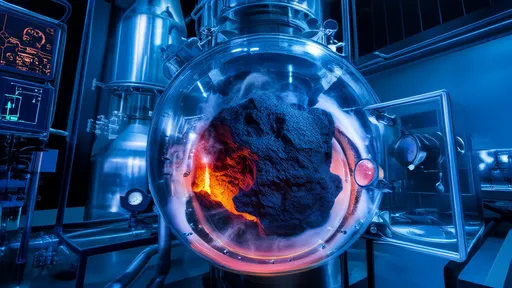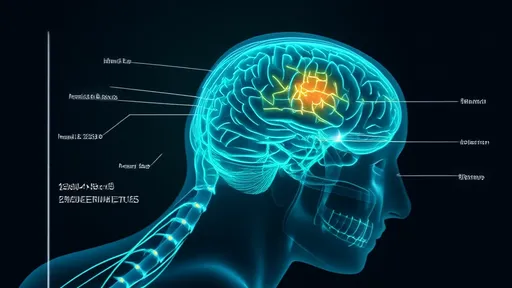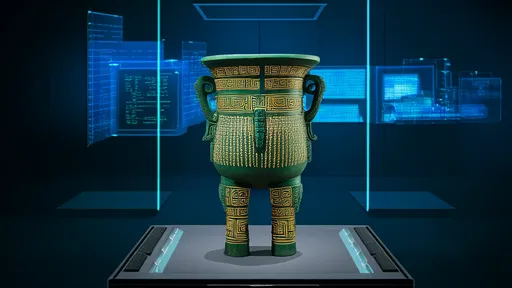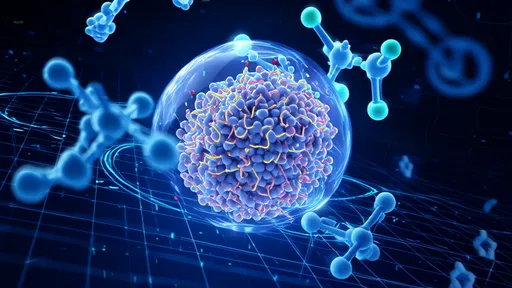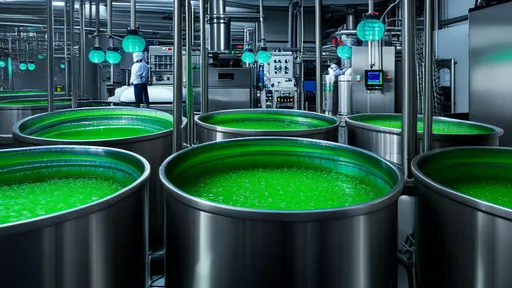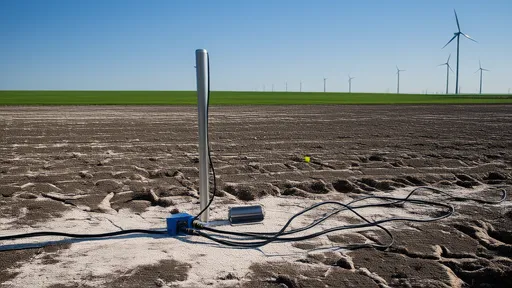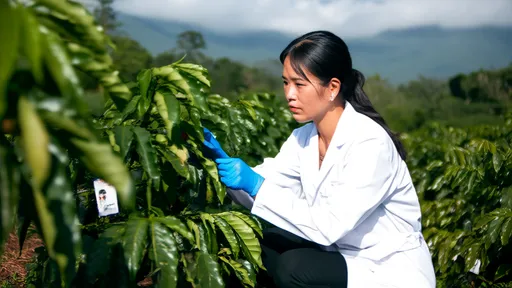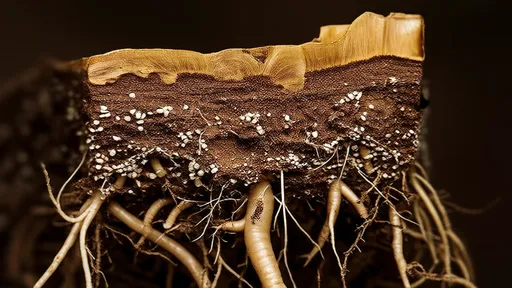For centuries, the intricate world beneath our feet remained largely a mystery. Farmers, ecologists, and biologists could only speculate about the complex interactions between plant roots and soil structure. Traditional methods of studying root systems involved destructive sampling—digging up plants and washing away soil to examine roots. This approach not only killed the plants but also disrupted the very soil architecture researchers sought to understand. However, a quiet revolution in agricultural science is changing everything.
Recent advancements in ultrasonic imaging are allowing scientists to peer into the soil without disturbing its delicate ecosystem. Specialized high-frequency sound waves can now map root systems in astonishing detail, revealing how roots grow, interact with soil particles, and even communicate with neighboring plants. This non-invasive technique provides continuous monitoring of root development over time, offering insights that were previously impossible to obtain.
The science behind root ultrasound imaging relies on sophisticated acoustic sensors that emit pulses into the soil. As these sound waves encounter roots and soil particles of different densities, they reflect back to the sensor at varying speeds. Advanced algorithms then reconstruct these echoes into three-dimensional images, distinguishing between roots, rocks, water pockets, and other soil components based on their acoustic signatures.
What makes this technology particularly remarkable is its ability to detect fine root hairs and mycorrhizal networks—the fungal partnerships that many plants depend on for nutrient exchange. These delicate structures, often just microns in diameter, appear clearly in high-resolution ultrasound scans. Researchers can now observe how these microscopic extensions explore soil pores, wrap around nutrient-rich particles, and create extensive underground networks that sometimes span entire forests.
Practical applications are already emerging across multiple fields. In agriculture, farmers use root ultrasound to optimize irrigation and fertilization by seeing exactly where and how deep roots are growing. Vineyard managers employ the technology to monitor grapevine root health without damaging precious old vines. Urban planners utilize subsurface imaging to select tree species whose root systems won't damage sidewalks and foundations.
The environmental implications are equally profound. Scientists studying carbon sequestration can now quantify how much CO2 gets stored in root biomass and surrounding soil. Ecologists tracking invasive species can monitor how alien plants outcompete natives through superior root strategies. Climate researchers have gained a powerful tool for observing how roots adapt to drought conditions or changing precipitation patterns.
Perhaps most exciting are the unexpected discoveries this technology has enabled. Ultrasound imaging has revealed that roots don't grow randomly but follow precise patterns influenced by soil structure, moisture gradients, and even the presence of neighboring roots. Some species appear to "avoid" each other underground, while others intertwine deliberately. Certain plants send out specialized "scout roots" to explore distant areas before committing more resources to that direction.
Challenges remain in making this technology more accessible and interpretable. The equipment currently requires significant expertise to operate, and soil composition can affect imaging quality—clay soils tend to produce clearer images than sandy ones. Researchers are working on portable, automated systems that could provide real-time root mapping for everyday agricultural use. Machine learning approaches are being developed to automatically classify root types and health status from ultrasound data.
As the technology matures, it promises to transform our understanding of the critical zone where geology meets biology. The hidden architecture of soil—with its root networks, fungal highways, and microscopic pores—forms the foundation of terrestrial life. With ultrasound imaging, we're finally developing the tools to study this underground universe on its own terms, without disruption. This non-destructive window into the soil may hold the key to solving some of our most pressing challenges in food security, environmental conservation, and climate change mitigation.
The next frontier involves combining ultrasound data with other sensing technologies. Some research teams are experimenting with multispectral imaging to correlate root activity with above-ground plant health. Others are integrating electrical resistivity tomography to map moisture distribution around root systems. These hybrid approaches could provide a more complete picture of the soil-plant continuum than any single method could achieve alone.
From the laboratories where these technologies are being refined to the fields where they're being deployed, a new appreciation for soil complexity is emerging. What was once considered mere "dirt" is now recognized as a dynamic, living system—and ultrasound imaging is helping us see it with fresh eyes. As we continue to develop these non-invasive exploration tools, we may find that some of nature's most important secrets have been hiding right beneath our feet all along.
The rhythmic lapping of brackish water against tangled mangrove roots conceals one of nature's most extraordinary genetic survival stories. For centuries, these salt-tolerant trees have guarded molecular secrets in their DNA that allow them to thrive where other plants perish. Today, scientists are cracking open this genetic vault through an ambitious international initiative called the Mangrove Gene Bank Project, with groundbreaking implications for global food security.
In the face of accelerating glacial melt due to climate change, scientists and engineers are turning to innovative solutions to slow the disappearance of these critical ice reserves. One such breakthrough is the development of high-albedo fabric covers, colloquially termed "glacial nanoblankets," designed to reflect sunlight and reduce ice ablation. These advanced textiles are emerging as a promising tool in the fight against rising sea levels and ecosystem disruption.
In the race to mitigate climate change, scientists and engineers are turning to the Earth’s own geological processes for solutions. One of the most promising avenues is basalt carbon mineralization, a natural chemical reaction that locks away carbon dioxide in solid rock. This process, often described as nature’s own carbon capture and storage (CCS) system, is now being harnessed and accelerated to combat rising atmospheric CO₂ levels. Unlike traditional carbon storage methods, which rely on fragile seals and uncertain long-term stability, basalt mineralization offers a permanent and geologically secure solution.
The concept of marine cloud brightening through aerosol seeding has emerged as a potential geoengineering strategy to combat global warming. By enhancing the reflectivity of clouds over oceans, scientists aim to increase Earth's albedo, thereby cooling the planet. This approach, while still in experimental stages, has garnered significant attention due to its promise of offsetting some effects of climate change without requiring drastic reductions in greenhouse gas emissions.
For decades, the study of chronic pain has been hampered by the inability to observe neural activity over extended periods. Traditional imaging techniques provide snapshots of brain activity but fail to capture the dynamic, evolving nature of pain processing. A groundbreaking approach using transparent skull implants is now revolutionizing our understanding of how chronic pain manifests and persists in the brain.
In the perpetual darkness of the deep sea, hydrothermal vents spew superheated, mineral-rich fluids into the frigid water, creating oases of extreme chemistry that have fascinated scientists for decades. These underwater geysers, often located along mid-ocean ridges, host complex reactions that may hold clues to the origins of life and the formation of mineral deposits. Until recently, studying these dynamic systems in their natural state posed immense challenges—until the advent of deep-sea chemical robots capable of in situ monitoring.
In a groundbreaking development that merges cutting-edge physics with ancient archaeology, researchers have successfully utilized neutron holography to reveal hidden inscriptions beneath the patina of bronze artifacts. This non-invasive technique promises to revolutionize the study of corroded metal objects, offering unprecedented access to historical texts without damaging delicate surfaces.
The advent of cryo-electron microscopy (cryo-EM) coupled with artificial intelligence (AI) has revolutionized the field of structural biology. By capturing the intricate dance of proteins in their native states, scientists are now able to unravel the dynamic architectures that govern cellular functions. This powerful synergy between cutting-edge imaging and machine learning is not just a technological leap—it’s a paradigm shift in understanding life at the molecular level.
The world of ultrafast spectroscopy has entered a revolutionary phase with the advent of attosecond spectral knives—a cutting-edge tool that enables scientists to selectively excite specific vibrational states in molecules. This breakthrough technology is reshaping our understanding of molecular dynamics and opening new frontiers in chemical reaction control. Unlike conventional methods that often excite molecules indiscriminately, attosecond spectral knives offer unprecedented precision by targeting individual quantum states with laser pulses lasting mere billionths of a billionth of a second.
The global food system is undergoing a quiet revolution, one fermentation tank at a time. In laboratories and production facilities around the world, scientists and entrepreneurs are harnessing the power of microalgae to create what many believe could become the protein source of the future. These microscopic photosynthetic organisms, grown in controlled fermentation environments, are demonstrating remarkable potential to address some of our most pressing nutritional and environmental challenges.
The agricultural sector is undergoing a quiet revolution as artificial intelligence merges with robotics to address one of nature's most vital processes: pollination. In fields across the world, experimental deployments of mechanical pollinator swarms are demonstrating how AI-driven vision systems can collaborate to mimic—and potentially enhance—the work of vanishing bee populations. These autonomous systems represent not just a technological breakthrough, but a necessary adaptation to ecological instability.
For decades, farmers and land reclamation specialists have struggled with the persistent challenge of saline-alkali soils - those unproductive lands where high salt concentrations and alkaline pH levels stunt plant growth and render vast areas agriculturally useless. Traditional remediation methods often proved either too slow, too expensive, or too water-intensive to implement at scale. Now, an innovative electrochemical approach using pulsed electric fields is demonstrating remarkable potential to transform these barren landscapes into fertile ground.
In the rolling hills of Colombia's coffee belt, a quiet revolution is taking place beneath the emerald canopies of coffee plants. Researchers are conducting groundbreaking field trials with genetically edited coffee plants designed to grow beans naturally low in caffeine. This ambitious project could forever change how the world consumes its most popular psychoactive beverage.
For centuries, the intricate world beneath our feet remained largely a mystery. Farmers, ecologists, and biologists could only speculate about the complex interactions between plant roots and soil structure. Traditional methods of studying root systems involved destructive sampling—digging up plants and washing away soil to examine roots. This approach not only killed the plants but also disrupted the very soil architecture researchers sought to understand. However, a quiet revolution in agricultural science is changing everything.
The concept of piezoelectric railways is revolutionizing the way we think about sustainable energy in transportation. By converting the mechanical energy from train-induced vibrations into electrical power, these systems offer a promising solution for reducing dependency on external power sources. The technology leverages piezoelectric materials, which generate electricity when subjected to mechanical stress, embedding them directly into railway tracks. This innovation not only enhances energy efficiency but also aligns with global efforts to combat climate change by minimizing carbon footprints.


